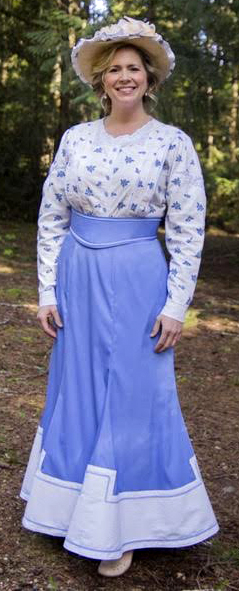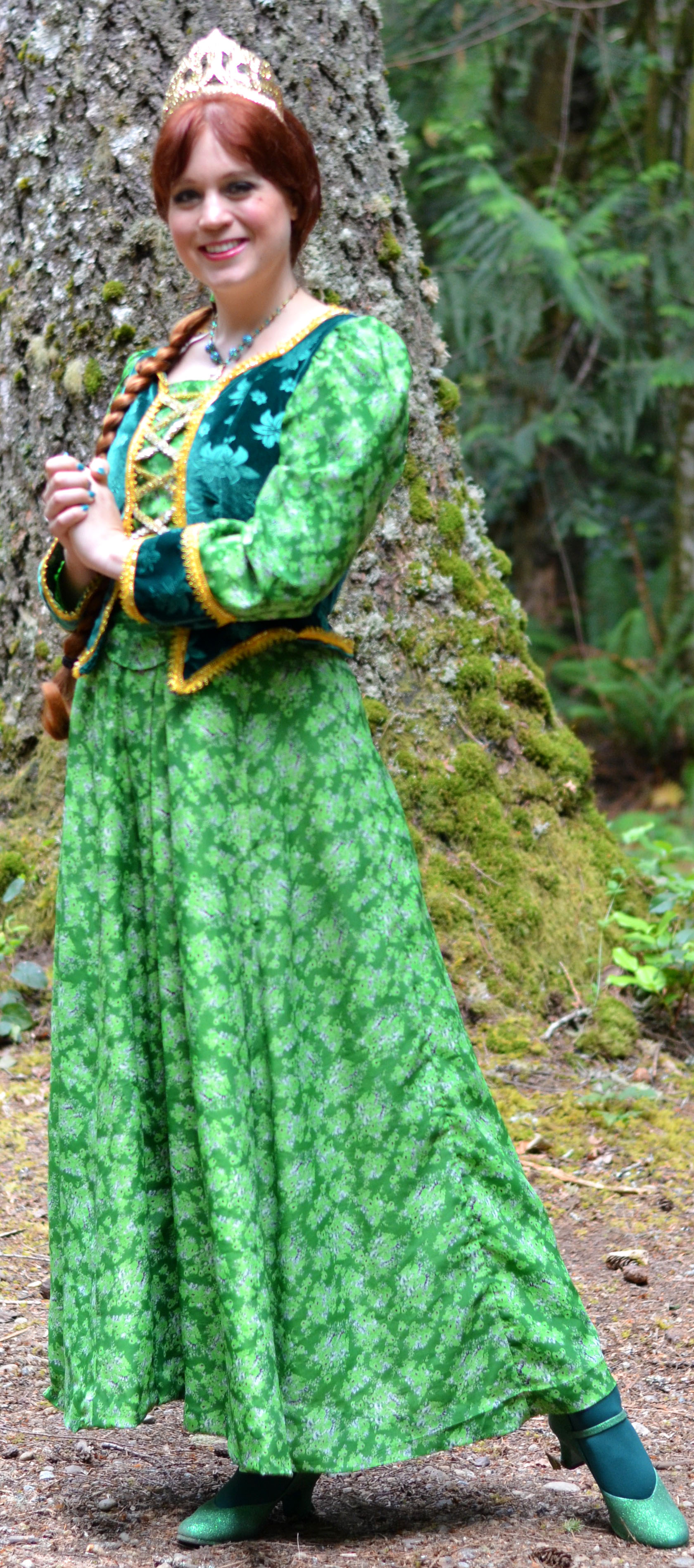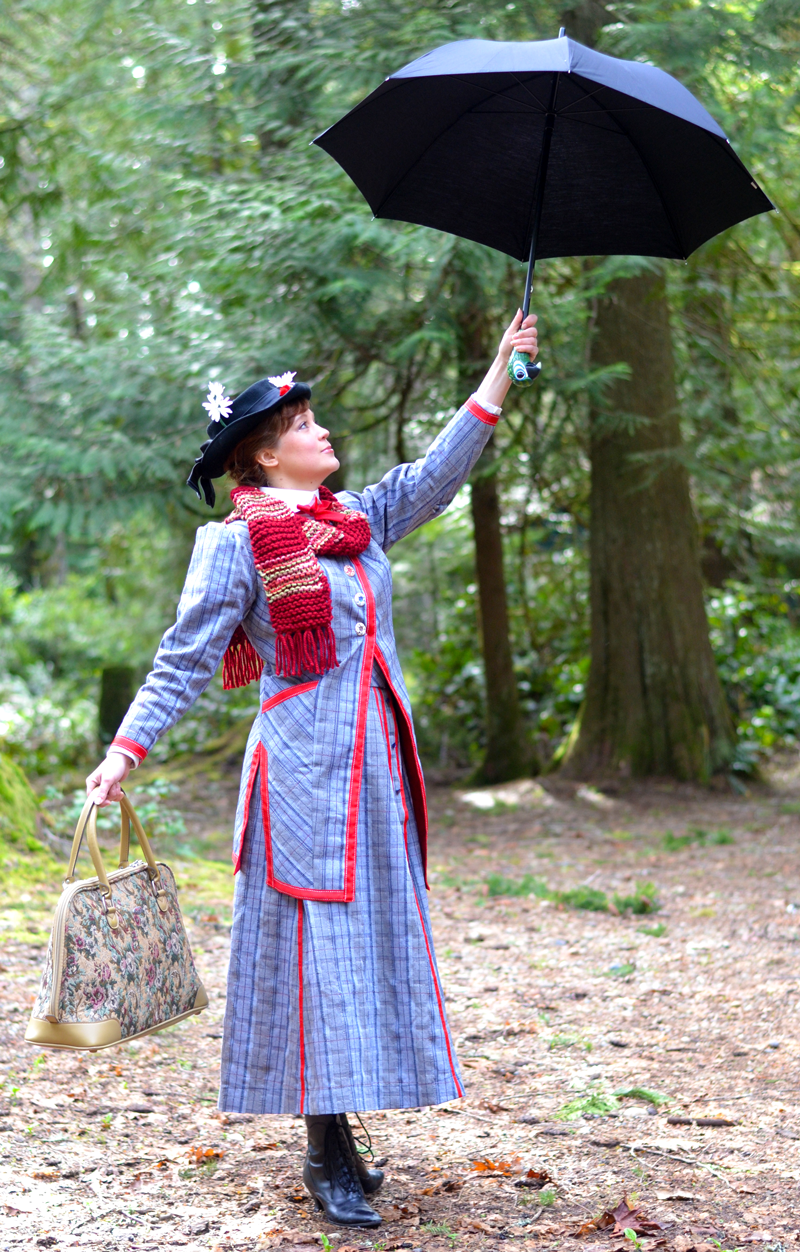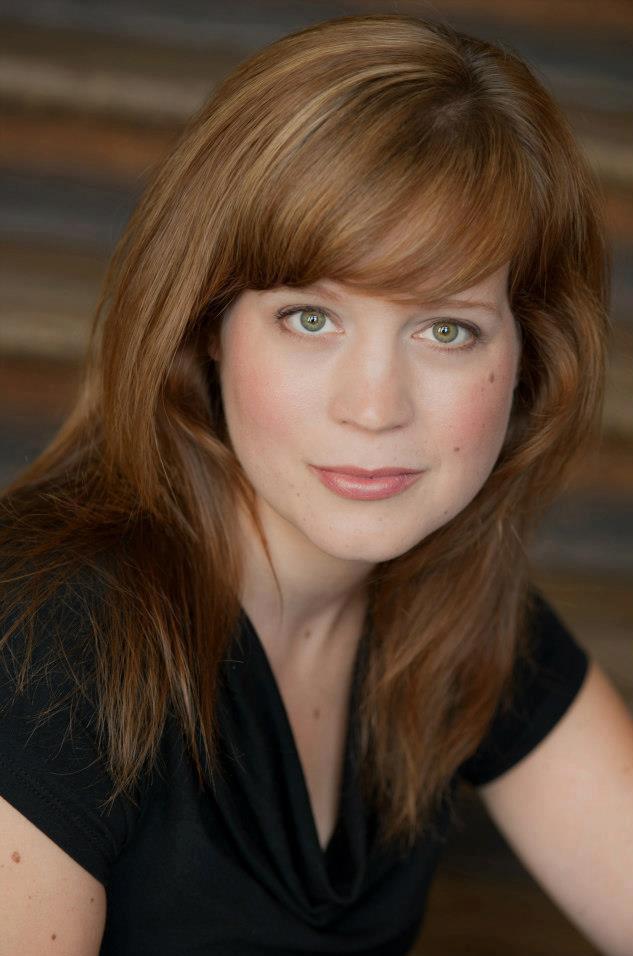 Beaven Walters is delighted to be returning to the Kitsap Forest Theater stage after a brief break after the birth of her fourth child. She got her start at KFT six years ago when she played the role of Maria in The Sound of Music and was joined by her oldest daughter, Sophie, who played the youngest Von Trapp, Gretl.
Beaven Walters is delighted to be returning to the Kitsap Forest Theater stage after a brief break after the birth of her fourth child. She got her start at KFT six years ago when she played the role of Maria in The Sound of Music and was joined by her oldest daughter, Sophie, who played the youngest Von Trapp, Gretl. .jpg) Since then, Beaven (4 shows), Sophie (6 shows), her son Scooter (4 shows), and even her husband, Mark (1 show), have appeared in six shows at KFT. Beaven also appeared as Cinderella in Into the Woods and Ida in Honk! (which she performed well into her third trimester of pregnancy.)
Since then, Beaven (4 shows), Sophie (6 shows), her son Scooter (4 shows), and even her husband, Mark (1 show), have appeared in six shows at KFT. Beaven also appeared as Cinderella in Into the Woods and Ida in Honk! (which she performed well into her third trimester of pregnancy.)
From Beaven: "Marian provides an opportunity to portray a more complex character than the typical ingénue. While she may be inexperienced at love, she is not a wide-eyed innocent. Marian is smart, savvy, wise, and strong. She has core values and standards she is not willing to compromise, even though she is teetering on the edge of entering the age when most women in her day would have been considered an “old-maid.” She is judged by the folks in the town for being different, and this sparks rumors. While on the surface Marian appears to be a tightly wound and cold librarian/music teacher, she is a romantic at heart and longs to find a “someone” with whom to share life’s simple pleasures. She also longs to be accepted by the townspeople. Additionally, Marian has a little brother, Winthrop, who has suffered since the loss of their father. This weighs heavily on Marian’s heart."
.jpg) "Enter Harold Hill, the least obvious choice for a romantic interest for Marian, but that is also what makes the pairing so interesting. Almost from the start, there is an undeniable chemistry between the two characters that opens up a range of feelings for Marian and forces a struggle between her intellect and her heart. At first, Marian sees Harold for what he is - a charismatic and smooth talking con artist. Then, at the end of Act 1 when Harold produces the promised instruments, including Winthrop’s cornet, Marian sees how Harold’s impact on the town, especially on her little brother, has done nothing but improve the lives of everyone Harold has come into contact with. This is a pivotal turning point for Marian as she starts to look at Harold in a new light."
"Enter Harold Hill, the least obvious choice for a romantic interest for Marian, but that is also what makes the pairing so interesting. Almost from the start, there is an undeniable chemistry between the two characters that opens up a range of feelings for Marian and forces a struggle between her intellect and her heart. At first, Marian sees Harold for what he is - a charismatic and smooth talking con artist. Then, at the end of Act 1 when Harold produces the promised instruments, including Winthrop’s cornet, Marian sees how Harold’s impact on the town, especially on her little brother, has done nothing but improve the lives of everyone Harold has come into contact with. This is a pivotal turning point for Marian as she starts to look at Harold in a new light."
.jpg) "In Act 2, Marian continues to see the goodness and kindness below Harold’s facade, which brings down her walls and ultimately leads to her transformation.
"In Act 2, Marian continues to see the goodness and kindness below Harold’s facade, which brings down her walls and ultimately leads to her transformation. .jpg) Her love for Harold, despite knowing the truth about him, brings about his own metamorphosis and he is willing to lose everything for this new found love. Love triumphs in this feel good musical where the townspeople and even the audience are all left a little transformed and perhaps even a bit less cynical as a result."
Her love for Harold, despite knowing the truth about him, brings about his own metamorphosis and he is willing to lose everything for this new found love. Love triumphs in this feel good musical where the townspeople and even the audience are all left a little transformed and perhaps even a bit less cynical as a result."
"It has been my pleasure to discover the deeper meaning and hidden gems in this marvelous work of Meredith Wilson’s and I can’t imagine a better theater in which to perform this particular musical. KFT, with its range of ages of the participants, operates much like a mini River City, Iowa. We are a company full of quirky individuals-mothers, fathers, children, grandparents, husbands and wives all participating in something that is greater than ourselves. There have been generations of Mountaineers Players coming together every spring to produce plays dating back to 1923, just eleven years after The Music Man takes place. I am so grateful to be part of such a tradition."
The Music Man opens Sunday, May 29th. Get your tickets now and plan a day in the forest being transported to another time and place.

 Meagan Castillo (Fiona) is excited to be spending another summer at the beautiful Kitsap Forest Theater. A Seattle native, Meagan has performed with many local theater companies, including Seattle Musical Theater, SecondStory Repertory, Tacoma Musical Playhouse and the Seattle Gilbert and Sullivan Society. She is currently a pre-nursing student at Bellevue College.
Meagan Castillo (Fiona) is excited to be spending another summer at the beautiful Kitsap Forest Theater. A Seattle native, Meagan has performed with many local theater companies, including Seattle Musical Theater, SecondStory Repertory, Tacoma Musical Playhouse and the Seattle Gilbert and Sullivan Society. She is currently a pre-nursing student at Bellevue College.
The 2015 season, offering two amazing shows, presented a unique challenge for Meagan. “Actors frequently ask each other about their ‘list’, which shows and roles they are dying to do. My list is pretty short, but Fiona in Shrek is definitely on it”, so when she saw that the theater was also producing Mary Poppins, another dream role, Meagan was torn. “It’s always tricky, balancing family and ‘work’. Fortunately my family is amazing, and although my kids are too busy to participate in the summer show, everyone encouraged me to go out for both shows.” Much to Meagan’s surprise, she landed both leads.
 The themes in Shrek (along with the quirky characters and upbeat music), are part of what drew Meagan to the show. “The need to fit in, to be what others expect you to be, can be strong. Shrek reminds us not only to embrace our own differences, but to respect the differences in others”.
The themes in Shrek (along with the quirky characters and upbeat music), are part of what drew Meagan to the show. “The need to fit in, to be what others expect you to be, can be strong. Shrek reminds us not only to embrace our own differences, but to respect the differences in others”.
Meagan was first drawn to the Kitsap Forest Theater in 2011, when her then 10-year-old son expressed an interest in joining her on stage. The unique environment of the theater, which encourages family participation both on and off stage, was a perfect fit. Since then, Meagan has had the privilege of appearing on the Kitsap stage with both of her younger sons; in the 2013 production of Narnia, and Honk! in 2014. “I believe that the family friendly, multi-generational environment of the Kitsap Forest Theater is very important, both for the cast and for the audience. I'm proud to be a part of creating a place where parents and grandparents can expose their children to quality theater in a relaxed and welcoming space”.

This painting, the inspiration for the title of the musical, Fiddler on the Roof, is also the inspiration for the "Dream Scene" in our production. Get your tickets now and enjoy an afternoon of magical theater in the woods.
The following is excerpted from a "Truth in Art" column by W. Scott Lamb entitled The Green Violinist by Marc Chagall:
“A fiddler on the roof. It sounds crazy, no?” asks the poor Jewish milkman. “In our little village of Anatevka you might say every one of us is a fiddler on a roof. Trying to scratch out a pleasant simple tune without breaking his neck. It isn’t easy. You may ask why do we stay up here if it is so dangerous? We stay because Anatevka is our home. And how do we keep our balance. That I can tell you in one word. Tradition!” (from the opening of Fiddler on the Roof)
Fiddler on the Roof is loosely based on a novel called "Tevye, the Milkman," written by Yiddish author Sholem Aleichem and published in 1894. At the time of its publication and in roughly the same area of the world, another Jewish Russian was experiencing life in similar fashion to the fictional characters of Anatevka. The boy’s name was Moishe Shagal, but the world knows him best as Marc Chagall, one of the best-known painters of the 20th century.
Even though Chagall moved away from his hometown of Vitebsk, the town remained a part of his memory and is reflected in The Green Violinist – a merry celebration of the tension between change and continuity of our lives. Chagall painted this in 1923-1924, thirty years after Aleichem’s novel and forty years before the Broadway production of Fiddler (which took Chagall’s painting as inspiration for the title of the musical).
The painting itself is enjoyable. Set against a bland backdrop of grey, brown, and black, a geometrically-inspired man in vibrant secondary colors (purple, orange, and green) plays a violin while standing on top of two houses. And check out that purple coat with triangle patterns! The painting is intended to make us reflect on the transitory and changing nature of the world in which we live. How should we respond to change and how should we relate to the past?
Imagine the historical changes that took place in Chagall’s hometown of Vitebsk. When Chagall was born, the town was under Tsarist rule. The Communist revolution brought political change and much turmoil. The Nazis took over the town for over three years, during which time 150,000 Jews died. Then, the Soviet Union took over the area and ruled until 1991.
How does one move forward into the future while not losing the essential character of who they are? In Jewish villages, the fiddler would come out and play at births, weddings, deaths – all transforming events that cause us to reflect on the past, present, and future.
Regarding tradition, Fiddler’s Tevye says, “You may ask, ‘How did this tradition get started?’ I’ll tell you! I don’t know. But it’s a tradition... and because of our traditions... Every one of us knows who he is and what God expects him to do.”
There is real tension between the forces that pull us forward and those that keep us in the past. Chagall’s fiddler is a modern Moses, commanding the people to remember the past even as they experience the change of the present and the promise of the future. The fiddler stands for joyful tradition, even while playing out to people leaving the village (horse and cart at top left) and finding freedom elsewhere (man floating off the page at top). The drumbeat of change will not stay outside of this man’s town, and yet the dog reminds us of fidelity to some part of the past. The ladder is at once both bound and free, one end on the ground and the other in the air. The tree itself is barren, but the bird in the branch reminds us of Chagall’s use of birds as a symbol of freedom.
And the fiddler himself is standing on and above the bedrock institutions of his village – home and synagogue. He is larger-than-life and yet his feet are still connected to things of the earth. This fiddler, central to “the tradition” of the village is also alive and well even in the midst of the fast-paced changes all around him. And the purple speaks of stable passion, emotional exuberance under control of the mind. Excited about the future even while retaining memory of the past.
Perhaps Chagall is saying that it is up to individuals to live larger than life by finding color and joy in remembrance of the past, even as the call of the future beckons.
What do you see in this painting? Leave a comment and tell us.

